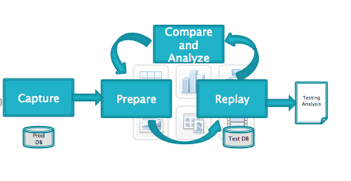Working with the right IT partner can make a huge impact on your business. Here on the Wyred In Blog, we’ve documented some of the tremendous results our IT optimization services have gotten for clients, as just one example of how an effective IT partner can impact your business through:
- Increased efficiency/effectiveness
- Improved morale
- Decreased turnaround time
- Cost savings
The right IT partner gets results.
Ultimately, all the benefits of an effective IT partner should lead to revenue generation while optimizing the costs of their engagement – and what business doesn’t want to maximize its profits? But, choosing the right IT partner can seem like a challenge. Where do you start? What questions should you ask? How do I pick the right one in the sea of candidates that contact me daily?
To help you get started, I’ve identified some core factors you’ll want to identify in a potential IT partner:
- Superior communication skills. A key area of interest for leaders is the relationship between CMOs and CIOs. Building a stronger relationship between marketing and IT will be critical for organizational success. A successful, savvy IT partner will have team members and leaders with translation skills – that is, the ability to speak the language of both the business and the technology.
- Effective scoping skills. Particularly when working with cross-organization projects like big data, asking the right questions is a key trait in your IT partner. What questions are we trying to answer? What’s the ecosystem that we have to bring together to answer that? Why are we doing this project? Understanding what big data can and can’t answer, then taking the right steps to match these insights to your business needs or wants, is a critical part of a successful IT partnership.
- Solid business and technology skills. This might seem like a no-brainer, but an effective IT partner – before starting any IT work – will want to understand your business and how it works…think business processes. Your business should drive your technology, not the other way around! The combination of business and technology skills go hand in hand when it comes to helping organizations achieve more through technology. A solid knowledge base and understanding of each is imperative to a successful IT partnership.
- Responsiveness and customer service. In every business, there are people who are there to do a job and go home. Then there are the truly stellar employees who are there to make their bosses and their employers look good – who truly care about doing the best job possible. You want that stellar employee’s outlook in your IT partner. An IT partner’s first priority should be to make your business look good and achieve more. You should come first. And it’s your IT partner’s job to be responsive to your questions and needs, and to provide you with the highest level of customer service possible. If you’re getting less than that, you’re with the wrong partner. I think that on the whole, you should always seek out that level of service first when searching for any type of business providing a service to your company. That’s why we often talk to people we know for references – getting an opinion from someone we trust can be invaluable. But sometimes you can’t get that firsthand account. In those instances, it’s your job to ask questions. Ask them what you’ll get when they’re done. Ask them about previous experience and how it applies to your situation. This is an example of ‘delivering before selling’ where you can see them working your problem instead of providing you marketing or sales material. It’s their job to prove to you they’re the right IT partner for your business. If they shy away from answering questions, they’re not the best choice.
- Offers a visual approach. As an IT provider, my main points of contact can range from CIOs to a range of non-technical business professionals. As I mentioned above, the ability to communicate across all disciplines is critical, but in a highly technical specialty, the ability to communicate visually is also incredibly helpful. Put more simply, your IT partner should be able to communicate the plan to you in a way where you just “get it.” Tech-speak can be dizzying for most professionals (even IT people, from time to time!), but diagrams and blueprints do more than throw terms at people, they show them how it will work. Ask potential IT partners to show you examples of solutions that have worked, and walk you through them. How they walk through other people’s solutions will give you an idea how they’ll communicate with you – and that’s critical to understanding how a long-term relationship will work out. You’ll be getting an idea of what it will be like to work with them by the way that they work with you during the selection process.
The right IT partner can help you with a specific project, or they can be a long-term strategic ally in your business. By looking for these five key traits, you’ll help ensure that the right IT partner is along to help you reach your goals. It’s what we do every day here at 5Wyre. If you’d like to talk to us about reaching your goals through IT optimization, IT consulting or other services, give us a call – we’re here to help!
Image courtesy of FreeDigitalPhotos.net/mack2happy

 This project recently completed, and I thought it was a great example of how some of our services at 5Wyre get results for clients. Here’s a basic rundown of the project and its results to help demonstrate why we’re so passionate about performance tuning and
This project recently completed, and I thought it was a great example of how some of our services at 5Wyre get results for clients. Here’s a basic rundown of the project and its results to help demonstrate why we’re so passionate about performance tuning and 
 At its core, big data provides meaningful information from a sea of data. Some of that data comes internally from your company, and some of that data comes from external sources. The key to understanding big data and its potential lies in understanding those data sources and how they relate to one another.
At its core, big data provides meaningful information from a sea of data. Some of that data comes internally from your company, and some of that data comes from external sources. The key to understanding big data and its potential lies in understanding those data sources and how they relate to one another.




